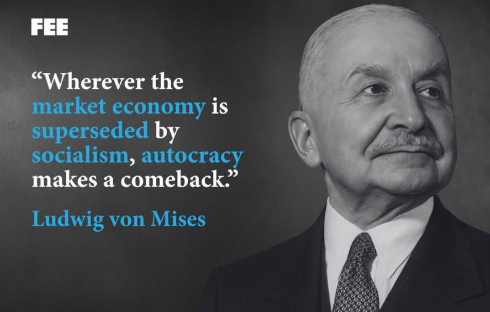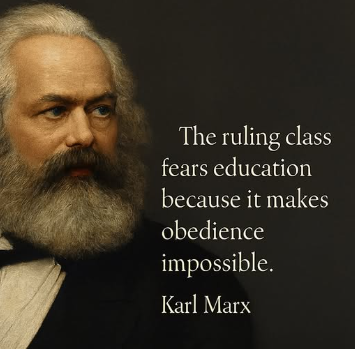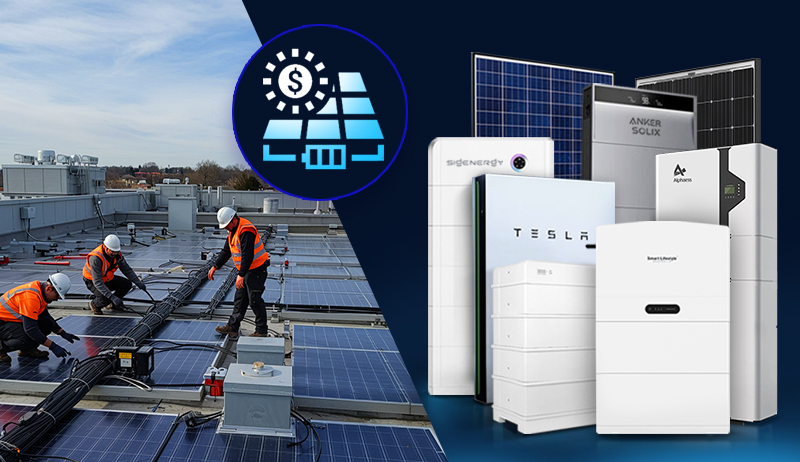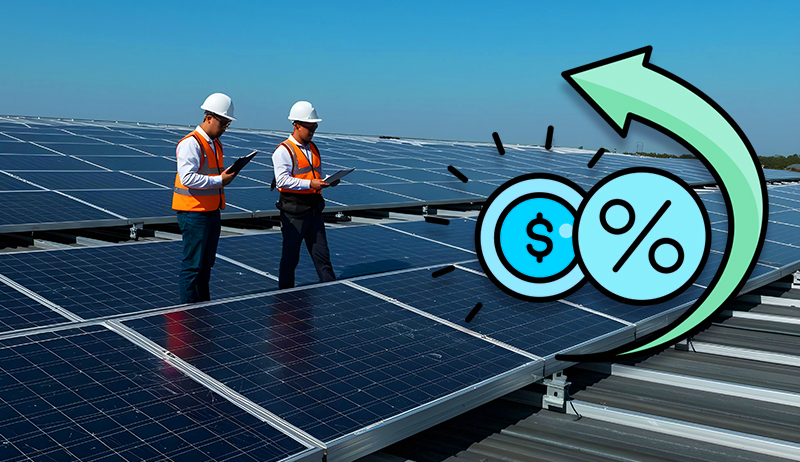Introduction The Integration Modern Agriculture with global markets
Modern agriculture faces the imperative of integrating seamlessly with global markets to ensure sustainability, economic growth, and food security.
In this era of interconnected economies, leveraging technology is paramount. Precision agriculture, driven by data analytics, sensors, and automation, allows farmers to optimize resource usage, enhance productivity, and meet the stringent quality standards demanded by international markets. Additionally, embracing sustainable practices is vital to align with global expectations, as consumers and markets increasingly prioritize environmentally conscious products.
To forge a successful integration, collaboration across the entire agricultural value chain is essential. This involves linking farmers with suppliers, distributors, and processors, creating a network that facilitates efficient communication and information flow. Digital platforms and e-commerce can play a pivotal role in connecting producers directly with consumers worldwide, reducing intermediaries and ensuring fair returns for farmers. Moreover, governments and international organizations need to foster policies that encourage innovation, streamline trade processes, and address challenges related to market access, tariffs, and regulations.
Education and capacity building are crucial components of integrating modern agriculture with global markets. Providing farmers with the knowledge and skills to adopt advanced technologies, adhere to international quality standards, and navigate global trade dynamics empowers them to compete effectively. Investing in infrastructure, such as transportation and storage facilities, also plays a vital role in ensuring that agricultural products can reach global markets in a timely and efficient manner. Ultimately, the integration of modern agriculture with global markets is a multifaceted endeavor that requires a harmonized effort from farmers, governments, businesses, and the wider society to reap the full benefits of a globally connected and sustainable agricultural sector.
Key Factor from Integration of Modern Agriculture with global markets
Here is Key Factor from Integration of Modern Agriculture with global markets:
1. Technological Adoption: Embrace precision agriculture, data analytics, and automation to enhance productivity, efficiency, and quality standards.
2. Supply Chain Networks: Establish efficient connections between farmers, suppliers, distributors, processors, and consumers using digital platforms and e-commerce.
3. Infrastructure Investment: Develop strong supply chain infrastructure, including transportation and storage facilities, to ensure timely and cost-effective global market access.
4. Policy Support: Formulate and implement supportive policies at national and international levels to encourage innovation, address trade barriers, and create an enabling environment for farmers and agribusinesses.
5. International Cooperation: Foster collaboration and agreements that harmonize trade practices, making it easier for agricultural products to cross borders and access diverse markets.
6. Sustainable Practices: Embrace environmentally conscious farming methods to meet global expectations and consumer preferences.
7. Education and Capacity Building: Provide farmers with knowledge and skills to adopt advanced technologies, adhere to international quality standards, and navigate global trade dynamics.
8. Direct Marketing: Facilitate direct transactions between producers and consumers through digital platforms, reducing dependence on intermediaries.
9. Fair Returns: Ensure fair and transparent compensation for farmers to incentivize participation in global markets.
10. Adaptability: Foster a culture of adaptability and resilience among farmers to respond effectively to evolving global market trends and challenges.
Key Factor from Integration of Modern Agriculture with global markets: Technological Adoption
Technological Adoption stands out as a key factor in the integration of modern agriculture with global markets. Embracing precision agriculture, data analytics, and automation empowers farmers to enhance productivity, optimize resource usage, and meet the stringent quality standards demanded by international markets.
This adoption not only improves efficiency but also positions agricultural practices to align with global expectations and sustainable practices. In a world where technology drives advancements, its integration is pivotal for the competitiveness and success of modern agriculture on the global stage.
Exemplary implementation of technological adoption in modern agriculture
An exemplary implementation of technological adoption in modern agriculture can be found in the Netherlands. This European country has embraced precision farming technologies to a significant extent, making it a global leader in agricultural innovation. Dutch farmers utilize advanced sensors, data analytics, and automation to optimize crop yields, minimize resource inputs, and ensure high-quality produce.
For instance, in the Netherlands, precision techniques such as precision irrigation, drone-assisted monitoring, and sensor-based crop management are employed. These technologies allow farmers to precisely tailor irrigation and fertilizer application, resulting in efficient resource use and reduced environmental impact. The collected data also aids in making informed decisions about planting schedules and crop rotations, contributing to sustainable and market-oriented farming practices.
The Netherlands’ commitment to technological adoption in agriculture has not only increased domestic productivity but has also positioned the country as an exporter of high-quality agricultural products to global markets. This example illustrates how a focus on technological innovation can drive successful integration of modern agriculture with global markets.
Key Factor from Integration of Modern Agriculture with global markets: Supply Chain Networks
Supply Chain Networks play a pivotal role in the integration of modern agriculture with global markets. A noteworthy example is seen in Brazil, a major agricultural exporter. Brazil has strategically developed robust supply chain networks to facilitate the efficient movement of agricultural products from farms to international markets.
In Brazil, well-established connections between farmers, processing facilities, transportation systems, and export channels have been crucial. Digital platforms and logistical innovations have streamlined the supply chain, reducing delays and ensuring the timely delivery of products. This efficient supply chain has contributed to Brazil’s ability to meet global demand for commodities such as soybeans, beef, and poultry.
By investing in and optimizing supply chain networks, Brazil has enhanced its competitiveness in global markets. The country’s success in integrating modern agriculture with international trade serves as a compelling example of how effective supply chain management can be a key factor in facilitating the seamless flow of agricultural products across borders.
Projects or initiatives related to the integration of modern agriculture with global markets:
Here is types of projects or initiatives related to the integration of modern agriculture with global markets:
1. The New Alliance for Food Security and Nutrition: Launched by the G8, this initiative aimed to boost agricultural productivity and investment in African countries, fostering partnerships between governments, the private sector, and international organizations.
2. Kenya Horticulture Competitiveness Project: Supported by the World Bank, this project focused on enhancing the competitiveness of Kenya’s horticulture sector by improving infrastructure, market access, and supporting smallholder farmers.
3. India’s e-NAM (National Agriculture Market): A digital platform connecting agricultural produce market committees (APMCs), e-NAM aimed to create a unified national market, improving transparency and efficiency in agricultural trade.
4. Brazil’s Agricultural and Livestock Plan: Brazil’s government implemented plans to support farmers through credit programs, technical assistance, and infrastructure development, enhancing the country’s position as a major global agricultural exporter.
5. Global Agriculture and Food Security Program (GAFSP): GAFSP, supported by multiple countries and international organizations, aimed to increase agricultural productivity and improve food security by providing funding to developing countries.
6. China’s Belt and Road Initiative (BRI) in Agriculture: Part of the larger BRI, China invested in agricultural infrastructure projects in participating countries to improve connectivity and support agricultural trade.
Key Factor from Integration of Modern Agriculture with global markets: Infrastructure Investment
Infrastructure Investment is a critical factor in the integration of modern agriculture with global markets. One noteworthy example is China’s Belt and Road Initiative (BRI), which, among its various objectives, includes substantial investments in agricultural infrastructure. This initiative involves building transportation networks, such as roads and ports, to connect agricultural regions to global markets efficiently.
The infrastructure investments made by China in participating countries under the BRI have not only improved the connectivity of rural areas but have also enhanced the overall competitiveness of these regions in international trade. Improved transportation and storage facilities enable farmers to get their produce to markets more quickly and in better condition, contributing to the successful integration of their agriculture with global supply chains.
The BRI demonstrates how strategic infrastructure investments can play a pivotal role in connecting agricultural regions to global markets, fostering economic growth, and ensuring the competitiveness of agricultural products on the international stage.
Here are examples of real projects related to infrastructure investment for the integration of modern agriculture with global markets.
1. Brazil’s Agricultural Logistics Program: Brazil has invested in improving transportation infrastructure, including roads and railways, to connect agricultural regions with export hubs and ports. This enhances the efficiency of transporting agricultural products to global markets.
2. India’s National Mission for Sustainable Agriculture (NMSA): NMSA includes projects for water resource management, irrigation infrastructure, and upgrading rural roads, aiming to support sustainable agricultural practices and improve connectivity for market access.
3. East African Northern Corridor Integration Projects: Countries like Kenya and Uganda have collaborated on infrastructure projects, including road and railway developments, to enhance the transportation of agricultural goods from landlocked regions to ports for global export.
4. China-Pakistan Economic Corridor (CPEC): Part of China’s Belt and Road Initiative, CPEC includes infrastructure projects in Pakistan, such as road networks and the development of the Gwadar Port, which can benefit the transportation of agricultural products.
5. Mozambique’s Beira Agricultural Growth Corridor: This initiative involves infrastructure investments in Mozambique, focusing on transport and logistics, to improve the competitiveness of agricultural products for export in the global market.
6. ASEAN Highway Network: The ASEAN member countries are working on the development of a comprehensive highway network to improve connectivity within the region, facilitating the transportation of agricultural goods across borders.
Key Factor from Integration of Modern Agriculture with global markets: Policy Support
Policy Support emerges as a key factor in the integration of modern agriculture with global markets. An illustrative example is the European Union’s Common Agricultural Policy (CAP). The CAP is a comprehensive set of policies and initiatives designed to support European farmers, enhance agricultural productivity, and ensure the competitiveness of European agricultural products in global markets.
Under the CAP, farmers receive direct payments, rural development funding, and market support measures, creating a supportive environment for agricultural innovation and sustainable practices. The policy also includes trade agreements and negotiations that aim to facilitate market access for European agricultural products globally.
This example underscores the importance of well-crafted policies in fostering an enabling environment for farmers and agribusinesses to thrive in international markets. Effective policy support addresses challenges, encourages innovation, and ensures that agricultural products can meet the standards required for successful integration into the global marketplace.
Initiatives and projects that were relevant to policy support for integrating modern agriculture
Here is examples of initiatives and projects that were relevant to policy support for integrating modern agriculture with global markets around that time.
1. European Union’s Common Agricultural Policy (CAP): The CAP supports European farmers through direct payments, rural development funding, and market support measures, aiming to enhance competitiveness and facilitate global market access.
2. World Trade Organization’s (WTO) Agreement on Agriculture: The WTO’s agreement addresses trade barriers and subsidies in agriculture, aiming to create a fair and market-oriented agricultural trading system.
3. United States Farm Bill: The U.S. Farm Bill includes various provisions to support American farmers, ranging from commodity programs to conservation initiatives, influencing the competitiveness of U.S. agricultural products in global markets.
4. African Union’s Comprehensive Africa Agriculture Development Programme (CAADP): CAADP aims to boost agricultural productivity and promote sustainable development across Africa, with a focus on policy reforms to support farmers and enhance market access.
5. India’s National Agriculture Market (eNAM): eNAM is a digital platform in India that aims to create a unified national market for agricultural commodities by connecting existing agricultural produce market committees (APMCs).
Key Factor from Integration of Modern Agriculture with global markets: International Cooperation
International Cooperation stands out as a key factor in the integration of modern agriculture with global markets. A notable example is the collaboration within the Association of Southeast Asian Nations (ASEAN). Member countries, such as Vietnam and Thailand, have engaged in cooperative efforts to facilitate cross-border trade in agricultural products.
Through initiatives like the ASEAN Economic Community, these nations have worked together to harmonize trade policies, reduce non-tariff barriers, and establish common standards. This collaborative approach fosters a more seamless flow of agricultural goods across borders, enhancing market access and competitiveness in the global arena.
The success of such international cooperation underscores the importance of harmonizing regulations and fostering mutual understanding among nations. It facilitates the creation of a unified framework that benefits farmers, streamlines trade processes, and ultimately promotes the successful integration of modern agriculture into global markets.
Initiatives and projects that were relevant to international cooperation for integrating modern agriculture with global markets
Here is examples of initiatives and projects that were relevant to international cooperation for integrating modern agriculture with global markets around that time :
1. Mekong River Commission (MRC): The MRC involves collaboration among countries such as Cambodia, Laos, Thailand, and Vietnam. It focuses on sustainable development and management of water and related resources, impacting agricultural practices in the region.
2. East African Community (EAC) Agriculture and Food Security Program: The EAC member states, including Kenya, Tanzania, and Uganda, have collaborated on programs to enhance food security and promote sustainable agriculture through joint policies and initiatives.
3. Common Market for Eastern and Southern Africa (COMESA) Seed Trade Harmonization Project: COMESA member states, including Zambia and Zimbabwe, have worked together to harmonize seed regulations, facilitating the cross-border trade of seeds and promoting agricultural productivity.
4. ASEAN Plus Three Emergency Rice Reserve (APTERR): APTERR involves ASEAN member countries collaborating with China, Japan, and South Korea to establish a regional rice reserve for emergency situations, ensuring stability in the rice market and food security in the region.
5. ECOWAS Agriculture Policy (ECOWAP): The Economic Community of West African States (ECOWAS) member countries, such as Nigeria and Senegal, have collaborated on ECOWAP to promote regional cooperation in agriculture, enhance food security, and facilitate agricultural trade.
Key Factor from Integration of Modern Agriculture with global markets: Sustainabile Practice
Integrating modern agriculture with global markets while emphasizing sustainable practices involves adopting farming methods that prioritize environmental health, social responsibility, and economic viability.
Here are key aspects:
1. Organic Farming: This approach avoids synthetic pesticides and fertilizers, focusing on natural alternatives. It promotes soil health, reduces environmental impact, and meets the growing global demand for organic products.
2. Precision Agriculture: Utilizing technology like sensors, drones, and data analytics helps optimize resource use. Farmers can apply inputs like water, fertilizers, and pesticides more precisely, reducing waste and environmental impact.
3. Agroecology: This holistic approach integrates ecological principles into farming systems. It emphasizes biodiversity, crop rotation, and natural pest control, fostering resilient ecosystems that can adapt to changing market dynamics.
4. Resource Efficiency: Sustainable agriculture emphasizes efficient use of resources such as water and energy. Implementing water-saving techniques, renewable energy sources, and responsible irrigation practices contribute to long-term sustainability.
5. Local and Global Collaboration: Farmers engaging in sustainable practices can benefit from global market access through certifications like Fair Trade or Rainforest Alliance. At the same time, promoting local markets and community-supported agriculture contributes to regional sustainability.
6. Climate Smart Agriculture: Adapting to climate change is crucial. Practices that reduce greenhouse gas emissions, enhance carbon sequestration, and increase resilience to climate impacts contribute to sustainable agriculture on a global scale.
The integration of modern agriculture with global markets requires a balanced approach that prioritizes both market demands and the long-term health of the environment and communities involved.
Key Factor from Integration of Modern Agriculture with global markets: Education and Capacity Building
Education and capacity building are crucial elements in the integration of modern agriculture with global markets.
1. Knowledge Transfer: Educating farmers about modern agricultural practices, technological advancements, and market dynamics enables them to make informed decisions. This includes training on sustainable farming methods, efficient resource management, and the use of technology in agriculture.
2. Market Understanding: Farmers need to be aware of global market trends, consumer preferences, and quality standards. This knowledge helps them align their production with market demands, ensuring that their agricultural products meet international standards and preferences.
3. Technology Adoption: Capacity building involves training farmers to use modern technologies, such as precision farming tools, data analytics, and efficient irrigation methods. This adoption enhances productivity, reduces resource usage, and improves the overall quality of agricultural products.
4. Risk Management: Education equips farmers with skills to manage risks associated with global market integration. This includes understanding market fluctuations, implementing sustainable farming practices to mitigate environmental risks, and diversifying crops to spread economic risks.
5. Sustainable Practices: Capacity building emphasizes the importance of sustainable farming methods. Farmers learn about organic farming, agroecology, and environmentally friendly approaches that not only meet market demands but also contribute to long-term ecological balance.
6. Value Addition: Education enables farmers to explore opportunities for value addition to their products. This may involve processing, branding, and packaging techniques that enhance the marketability of their agricultural goods.
7. Policy Advocacy: Capacity building can extend to empowering farmers with knowledge about agricultural policies and trade regulations. This enables them to advocate for policies that support sustainable farming practices and fair trade, creating a conducive environment for global market integration.
Education and capacity building empower farmers with the skills and knowledge needed to navigate the complexities of modern agriculture and global markets. This, in turn, fosters a more resilient and sustainable agricultural sector.
Key Factor from Integration of Modern Agriculture with global markets: Direct Marketing
Direct marketing is a key factor in the integration of modern agriculture with global markets. This approach involves farmers directly selling their products to consumers or businesses, bypassing intermediaries. By establishing direct connections, farmers can gain better market access, receive fairer prices, and build stronger relationships with consumers, contributing to a more sustainable and resilient agricultural system.
Direct marketing in the integration of modern agriculture with global markets refers to the practice where farmers sell their products directly to consumers, retailers, or businesses without intermediaries.
Here’s why it’s a key factor:
1. Market Access: Direct marketing allows farmers to reach consumers and businesses more efficiently, reducing dependency on middlemen. This direct connection provides broader access to markets, both locally and globally.
2. Fairer Prices: Eliminating intermediaries can result in better financial returns for farmers. They receive a larger share of the profits, as the markup traditionally taken by middlemen is reduced, leading to fairer prices for their produce.
3. Consumer Relationships: Direct marketing fosters direct relationships between farmers and consumers. This connection enhances trust and transparency, as consumers can learn about the origin and cultivation methods of the products they purchase, promoting a sense of authenticity.
4. Customization and Differentiation: Farmers engaging in direct marketing can respond more effectively to consumer preferences and market trends. They can customize products based on demand and differentiate themselves through unique selling propositions, such as organic or sustainable farming practices.
5. Reduced Food Miles: Direct marketing often involves selling products locally, reducing the distance food travels from farm to consumer. This not only lowers carbon emissions but also aligns with the growing consumer preference for locally sourced, environmentally friendly products.
6. Market Diversification: Direct marketing provides farmers with the opportunity to explore diverse markets. They can sell directly to consumers, local markets, restaurants, or even establish online platforms, diversifying their customer base and reducing dependency on a single market channel.
7. Feedback and Innovation: Direct interaction with consumers enables farmers to receive immediate feedback. This feedback loop facilitates continuous improvement and innovation, helping farmers adapt their products to changing market demands.
In summary, direct marketing enhances market access, ensures fairer returns for farmers, builds strong consumer relationships, and aligns with sustainability goals by reducing food miles. It contributes to a more resilient and responsive agricultural system in the context of global markets.
Key Factor from Integration of Modern Agriculture with global markets: Fair Returns
Fair returns are a pivotal factor in the integration of modern agriculture with global markets. Ensuring equitable compensation for farmers not only supports their livelihoods but also promotes sustainability by fostering a balanced and mutually beneficial relationship between producers and the global market.
Fair returns are critical in the integration of modern agriculture with global markets due to several key reasons:
1. Economic Sustainability: Fair returns ensure that farmers receive reasonable compensation for their efforts and investments. This economic sustainability is vital for the livelihoods of farmers and their ability to continue contributing to the global market.
2. Incentive for Quality: When farmers receive fair prices for their produce, it serves as an incentive for them to maintain high-quality standards. This, in turn, benefits consumers and supports the reputation of agricultural products in the global market.
3. Reduced Exploitation: Fair returns help protect farmers from exploitation by middlemen or larger entities. By receiving a fair share of the profits, farmers are less vulnerable to unfair pricing practices, ensuring a more equitable distribution of value along the supply chain.
4. Investment in Innovation: Adequate returns provide farmers with the financial means to invest in modern technologies, sustainable practices, and innovations. This investment contributes to increased productivity, efficiency, and the ability to meet evolving market demands.
5. Social Equity: Fair returns contribute to social equity by addressing income disparities within the agricultural sector. This is particularly important for smallholder farmers, allowing them to improve their standard of living and contribute positively to their communities.
6. Market Access: When farmers receive fair returns, it strengthens their position in the global market. This, in turn, encourages their continued participation, fostering a more stable and reliable supply chain for global consumers.
7. Long-Term Agricultural Resilience: Fair returns support the resilience of the agricultural sector by providing a stable foundation for farmers to weather economic challenges and uncertainties. This stability is crucial for the long-term sustainability of agriculture in the context of global markets.
In summary, fair returns are a key factor in ensuring the economic viability, innovation, and social equity of modern agriculture as it integrates with global markets. This approach contributes to a sustainable and balanced agricultural system that benefits both farmers and the broader global community.
Key Factor from Integration of Modern Agriculture with global markets: Adaptability
Adaptability stands out as a key factor in the integration of modern agriculture with global markets. The ability of farmers to adjust and respond to changing market demands, technological advancements, and environmental conditions is crucial for sustainable and successful participation in the global agricultural landscape.
Adaptability is a crucial factor in the integration of modern agriculture with global markets for several reasons:
1. Market Dynamics: Global markets are dynamic and subject to frequent changes in consumer preferences, regulations, and economic conditions. Farmers need to adapt their production methods and offerings to meet evolving market demands.
2. Technological Advancements: The agricultural sector is continually influenced by technological innovations. Farmers who can adapt to and adopt new technologies such as precision farming, digital agriculture, and advanced machinery are better positioned to improve efficiency and productivity.
3. Climate Variability: Climate change introduces uncertainties in weather patterns, affecting crop yields and farming conditions. Farmers who can adapt their practices to changing climate conditions are more likely to maintain stable production and meet market expectations.
4. Regulatory Environment: Global markets often come with varying regulatory requirements. Farmers need to stay informed and adapt their farming practices to comply with international standards, certifications, and trade regulations to ensure market access.
5. Consumer Trends: Consumer preferences, especially in the food industry, can change rapidly. Farmers must adapt their production methods to align with trends such as organic farming, sustainable practices, and locally sourced products to meet consumer expectations and market trends.
6. Supply Chain Resilience: The integration with global markets involves navigating complex supply chains. Farmers who can adapt to supply chain disruptions, optimize logistics, and ensure product traceability are better equipped to maintain reliable market access.
7. Risk Management: Agricultural production is exposed to various risks, including pests, diseases, and market fluctuations. An adaptable approach involves implementing risk management strategies, such as diversification of crops, insurance, and sustainable practices, to mitigate potential challenges.
8. Collaboration and Networking: Adaptable farmers recognize the importance of collaboration and networking. Building relationships with other stakeholders, such as agricultural organizations, research institutions, and market intermediaries, can provide valuable insights and support.
Aaptability in modern agriculture is essential for farmers to navigate the complexities of global markets. It enables them to respond effectively to changing conditions, embrace innovation, and foster resilience in the face of uncertainties, contributing to the sustainability and success of agricultural integration on a global scale.
Conclusion Key Factor from Integration of Modern Agriculture with global markets
A key factor in the integration of modern agriculture with global markets is the multifaceted concept of adaptability.
The ability of farmers to adjust to dynamic market conditions, embrace technological innovations, navigate regulatory landscapes, and respond to shifting consumer preferences is essential for sustained success in the global agricultural arena. This adaptability not only ensures economic viability but also promotes resilience, sustainability, and the ability to meet the evolving demands of a rapidly changing global market.
The emphasis on fair returns complements adaptability, creating a symbiotic relationship that underpins the integration of modern agriculture with global markets. Fair returns not only support the economic sustainability of farmers but also act as a driving force for continued innovation, quality improvement, and social equity within the agricultural sector.
The integration of modern agriculture with global markets hinges on the intertwined principles of adaptability and fair returns. Together, these factors create a foundation for a sustainable, innovative, and equitable agricultural system that can thrive in the complexities of the global marketplace, ultimately benefiting farmers, consumers, and the broader global community.
https://www.exaputra.com/2023/12/integration-of-modern-agriculture-with.html
Renewable Energy
FAQs: Your Most Common Commercial Solar Questions Answered
The post FAQs: Your Most Common Commercial Solar Questions Answered appeared first on Cyanergy.
https://cyanergy.com.au/blog/faqs-your-most-common-commercial-solar-questions-answered/
Renewable Energy
Socialism and Autocracy
 20th Century Austrian-American economist and devout anti-communist Ludwig von Mises clearly believed what he said at left, and there were plenty of examples in the 1900s to support his concept.
20th Century Austrian-American economist and devout anti-communist Ludwig von Mises clearly believed what he said at left, and there were plenty of examples in the 1900s to support his concept.
Now, 50 years after his death, we wonder what he would think about today’s United States.
The U.S. has an economy that’s as close to unadulterated capitalism as anyone could imagine, but we have a president who is most definitely an authoritarian, a would-be dictator.
Renewable Energy
Why Education Is Such a Low Priority
 What Karl Marx said here has been repeated by many dozens of people over the years, notably George Carlin (see below).
What Karl Marx said here has been repeated by many dozens of people over the years, notably George Carlin (see below).
-
Climate Change4 months ago
Guest post: Why China is still building new coal – and when it might stop
-
Greenhouse Gases4 months ago
Guest post: Why China is still building new coal – and when it might stop
-
Climate Change2 years ago
Spanish-language misinformation on renewable energy spreads online, report shows
-

 Greenhouse Gases2 years ago
Greenhouse Gases2 years ago嘉宾来稿:满足中国增长的用电需求 光伏加储能“比新建煤电更实惠”
-
Climate Change Videos2 years ago
The toxic gas flares fuelling Nigeria’s climate change – BBC News
-

 Climate Change2 years ago
Climate Change2 years ago嘉宾来稿:满足中国增长的用电需求 光伏加储能“比新建煤电更实惠”
-

 Carbon Footprint2 years ago
Carbon Footprint2 years agoUS SEC’s Climate Disclosure Rules Spur Renewed Interest in Carbon Credits
-
Climate Change2 years ago
Why airlines are perfect targets for anti-greenwashing legal action

























 Full energy assessment
Full energy assessment




